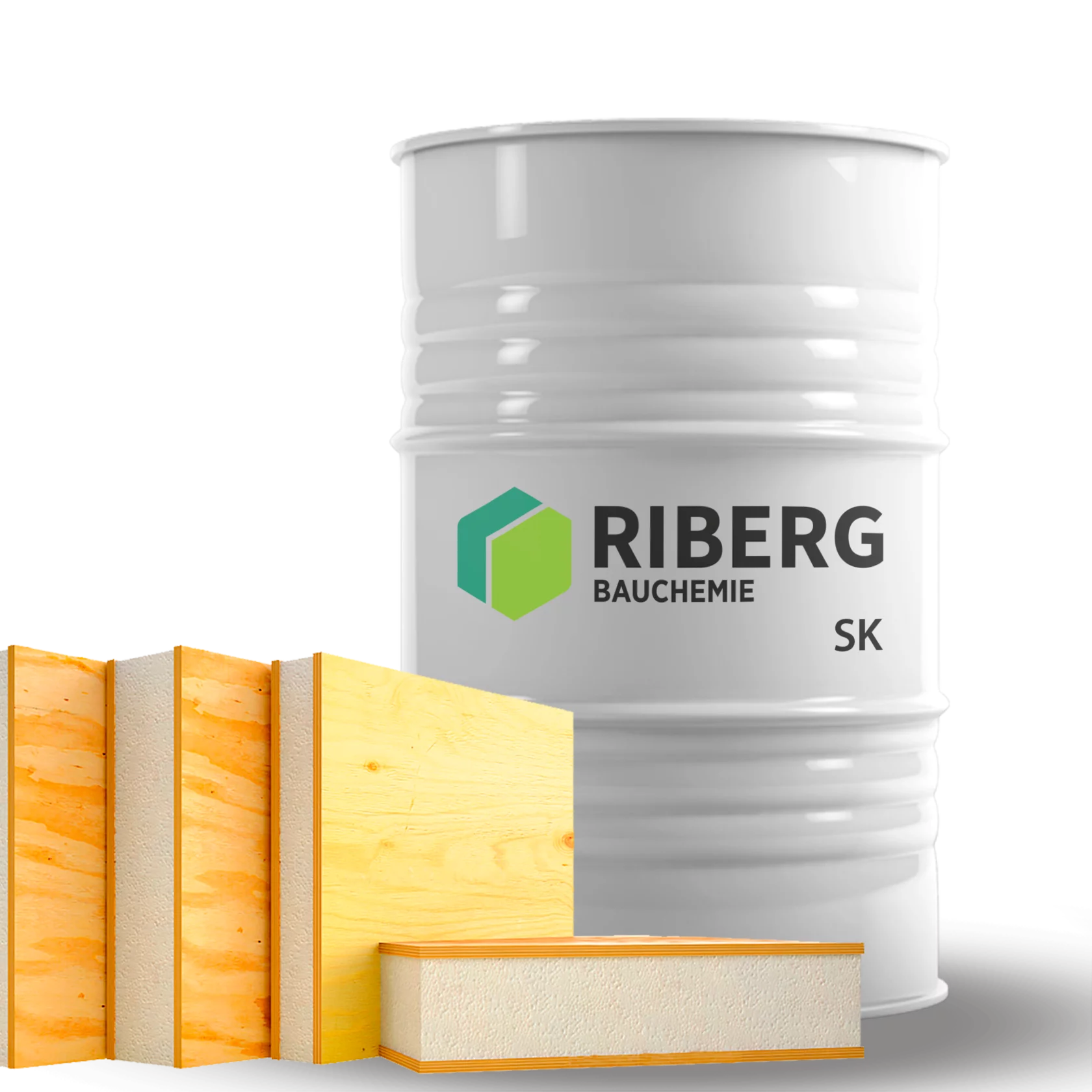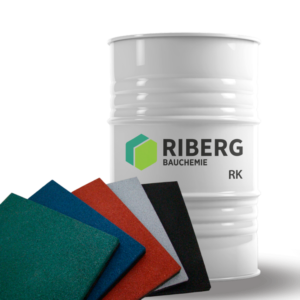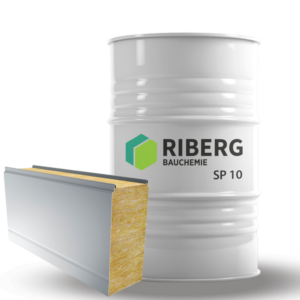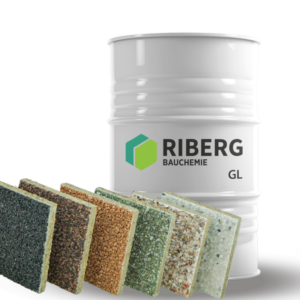Description
The one-component adhesive is designed for the production of structural thermal insulation panels SIP (Structural Insulated Panels) with various types of thermal insulation fillers. It is recommended for bonding materials such as expanded polystyrene, mineral wool, glass wool, polyurethane foam with substrates like OSB boards, sheet steel, galvanized steel, steel with applied coatings and painting, stainless steel, ceramics, gypsum boards, roofing felt, wood, concrete, and others.
Characteristics
Non-volatile content, %, not less than 100
Dynamic viscosity at a temperature of 25 °C: 2000–8000 mPa·s
Optimal processing temperature, °С: от +5 до +40
Optimal humidity, %: 50 – 80
Optimal adhesive consumption, kg/m2: 0,15-0,50
Open time, min (23 °C, 50% relative humidity): 5-60
Open time for assembly and adjustment of bonded elements, min (23 °C, 50% relative humidity): 5-60
Pressing time, min (23 °C, 50% relative humidity): 6-120
Time for achieving full working stability of the adhesive joint: 24
Application Recommendations
Riberg SK Polyurethane Adhesive cures under the influence of moisture in the air and in the bonded materials. During bonding, the volume of the adhesive seam increases several times due to the foaming of the adhesive. The degree of foaming increases with the increase in curing speed. The curing time of the adhesive is reduced with the rise in temperature and humidity of the environment where the bonded materials are located. After the adhesive has cured, an elastic adhesive seam resistant to temperatures ranging from -40 to +80 °C is formed.
The surfaces to be bonded must be free from contaminants and, if necessary, degreased. The adhesive should be applied to the bonding surfaces, and if there is no need to bond the entire surface, the adhesive should be applied in the form of strips with a width of at least 5-10 mm every 100 mm (additional adhesive should be applied to the edges of the bonded elements). The adhesive consumption should not be less than 200 g/m2 for the bonded elements where the adhesive is applied to the entire surface and 150 g/m2 for the bonded surfaces where the adhesive is applied in the form of strips. In the case of using more porous materials, such as mineral wool, the adhesive consumption should be at least 300 g/m2 and should ensure the application of adhesive to all bonded surfaces.
In the case of using materials that do not allow air passage (except for wood), it is necessary to moisten the layer of adhesive applied to the bonding surfaces with a water mist during bonding. After that, the bonded elements should be placed under pressure until the adhesive seam is completely cured. It is recommended to apply water in an amount of 10-15% of the total amount of the applied adhesive. Moistening with water also contributes to the uniform curing of the entire surface of the bonded elements. After applying the adhesive and water, the bonded elements should be folded and subjected to pressing until the adhesive seam is completely cured.
Packaging and Storage
Transportation and storage of system components should be carried out in accordance with current regulatory requirements.
Transportation of system components is carried out only by closed transport. Protect from freezing, direct sunlight. System components are hygroscopic!
Protect from contact with moisture and natural humidity!
It is FORBIDDEN to store opened packaging with remnants of components for subsequent use!
Shelf life: 6 months (provided stored in a dry, heated room in a tightly closed original package) from the date of manufacture.
The product is supplied in:
— Barrel 220 kg
— Barrel 50 kg




